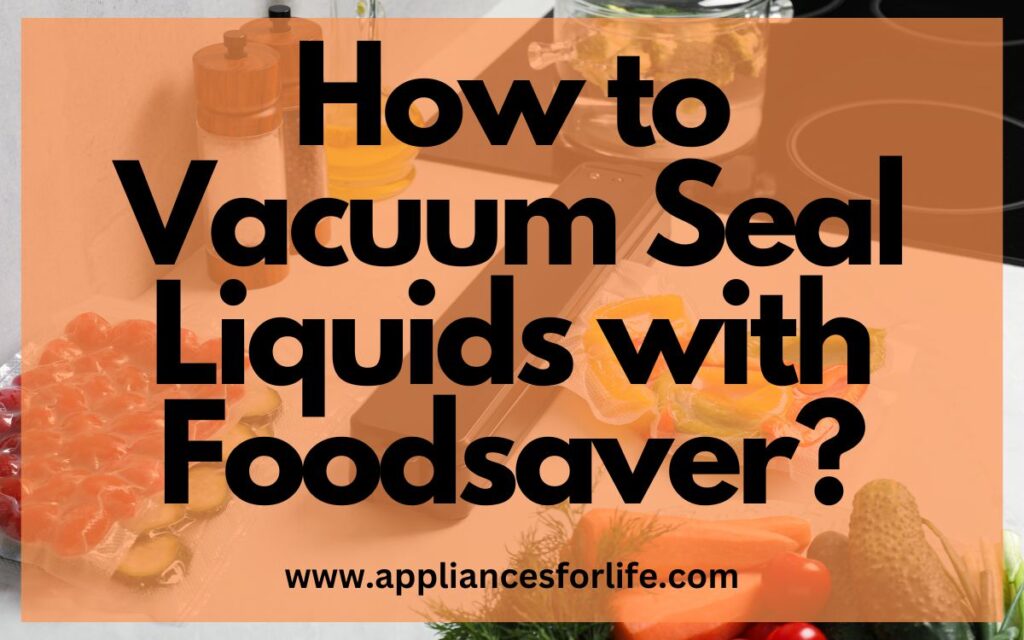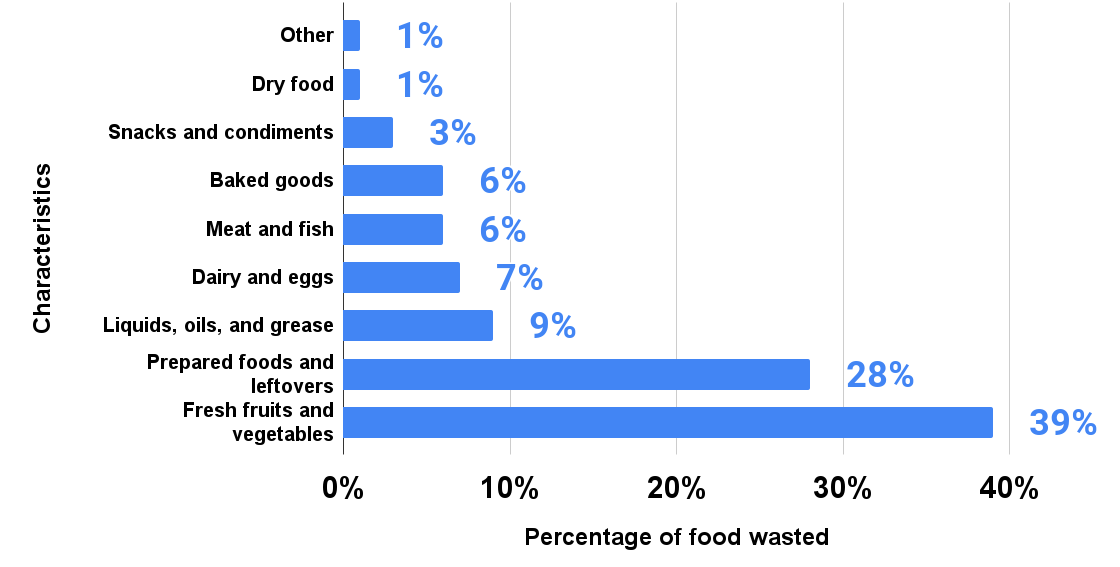- Over the years, the vacuum sealing process has become an important process for anyone who wishes to store their food for a longer period. Other methods exist, but it’s safe to say the combination of vacuum sealing and refrigerator provide the best results. To vacuum seal liquid, you have to ensure that all the necessary steps are duly followed. Foodsaver liquid sealing is as important as sealing any other food. In this article, we’re going to be discussing how to vacuum seal liquids with Foodsaver vacuum sealers.
- The vacuum sealing process is so popular in the United States that 3 out of 5 households must have adopted it at least once. One of the greatest misconceptions people have about vacuum sealers is that they only work for certain types of food. However, we've seen over the years that that's not entirely true. Vacuum packing liquid is also very possible. If you want to invest in vacuum sealing but you're scared whether or not you'll get premium value for what you're about to invest in, we'll also be discussing some of the benefits of vacuum sealing.
Anyone familiar with the concept of food preservation will be aware of how efficient vacuum sealing is. Since the start of the modern era, this food preservation method has gained widespread popularity because of its efficiency, and that explains why a lot of people invest heavily in vacuum sealers. The popularity enjoyed by this method is not far-fetched; we all knew a time would come when the method would get its due credits.
Table of Contents
ToggleBefore vacuum sealers came into existence, people had special ways of keeping their food items fresh and nutritious. Thinking back from this modern area, it may be quite hard to imagine. Be that as it may, these methods worked effectively for them back in those days. Methods like Mylar bags and Mason jars have managed to survive many decades because they are still as effective as ever, only that they are more efficient when combined with the functionality of vacuum sealers.
Even in this modern era, there are still many ways of preserving food, and some of them don’t include having to get a vacuum sealer. What we’ve been able to figure from taking a good look at all these methods is that food containers are, in fact, very necessary. Some of these food containers include glass jars, freezer bags, vacuum bags, and many more. Once you have these containers, you can opt for a more traditional way of getting the air out of them, since that’s the purpose of the whole vacuum sealing process, and why people often get vacuum sealers in the first place.
There’s a conventional way of vacuum sealing some of these food containers without investing in a vacuum sealer. This explains why topics like “How to vacuum seal a bag without a vacuum” and “How to seal mason jars without vacuum sealers” have trended heavily over the past few years. The goal is to suck out the air out of your food containers, whether it’s a glass jar or a vacuum bag. These methods will give you that, only that they require more time and effort than when you use vacuum sealers.
Having vacuum sealers in the picture means we have efficient machines that will not only suck the air out of your vacuum bags but do that efficiently. Vacuum sealer’s effective operation is what makes the machine one of the most popular household appliances in the world. When you compare its functionality and the results you’ll get at the end of the day to what some of the conventional methods we discussed earlier, you’ll be able to tell that there’s a huge difference. There are things to look for when purchasing your ideal vacuum sealer. Check here to read more on these factors.
The good thing is that there are varieties of options on the market when it comes to vacuum sealers. It doesn’t matter what you’re trying to achieve with your vacuum sealer, you’ll always find a vacuum sealer that’ll help you get just what you want. Even if you’re working with a budget, you’ll still find a vacuum sealer within your budget, because there are vacuum sealers you can get for less than $100. There are also vacuum sealers for wet and dry food, hunters, campers, handheld vacuum sealers that are priced fairly, and many more.
It is easier to vacuum seal dry food than looking for how to vacuum seal liquid substances. Using a Foodsaver vacuum sealer or any vacuum sealer to vacuum seal liquids without a clear idea of how to get it done properly, you’ll end up getting things messy. According to A Subtle Revelry, the common problem people encounter when vacuum-sealing liquids is that the seal usually splits before you get to remove it. A liquid vacuum sealer is a machine that can comfortably help you seal food containers with liquid substances. The truth is that every vacuum sealer is capable of doing that, but the result depends on how you handle the process.
Questions on how to vacuum seal liquids with Foodsaver are common on different platforms on the internet. FoodVacBags says most of their customers often wonder if their soups or other liquid could be vacuum sealed. We’ve also come across questions like this on the internet, with people always eager to know if they can vacuum seal their liquid food items with vacuum sealers. The good news is liquid substances can be vacuum sealed. However, you need to get a hold of the perfect ways to get it done to make sure you don’t make a mess of the process.
The chart above shows the distribution of food waste from retail, households, and food service in the United States in 2017. Thanks to the information provided by Andrea Blazquez of Statista, we were able to come up with a graphical illustration of the food loss in the United States in 2017 by category.
In 2017, fresh fruits and vegetables made up for the category with the highest loss, making up for a whopping 39%. Prepared foods and leftovers made up for 28%. Liquids, oil, and grease made up for 9% while dairy and eggs made up for 7% of the total food loss in 2017. Meat and fish; baked goods; snacks and condiments; and dry food made up for 6%, 6%, 3%, and 1% respectively.
The chart above is enough proof that food spoilage and waste are a big deal in the country, and we can only imagine how worse the situation would be without the vacuum sealing process. One of the benefits of vacuum sealing, some of which we’ll be discussing later in this article, is that it helps save money. Purchasing in bulk without a clear plan on how to preserve those food items will only result in spoilage.
Before we get into how to vacuum seal liquids using Foodsaver vacuum sealers, let’s take a quick look at some of the benefits of vacuum sealing.
5 Benefits of Vacuum Sealing
People know the importance of vacuum sealing, and how efficient the process is. This explains why a lot of people invest heavily in vacuum sealers and other vacuum-related food containers like vacuum/freezer bags and glass jars. The method is also popular worldwide as one of the most efficient methods as long as food preservation is concerned.
It is a general philosophy that people want to know the benefits of whatever they’re about to get before getting it. Vacuum sealing comes with a host of benefits, and some of them include;
Protects Your Food With Freezer Burn
One of the many advantages of vacuum sealing your food before putting them in the freezer is that the method protects your food from freezer burn. When you don’t package your food well, it comes in contact with the air, and as a result, dehydration and oxidation occur, leaving the food with a burn. Freezer burn may not be dangerous to your health, but what it does is that it changes the taste of the food, and also denies you some important nutrients you’re supposed to get out of the food.
Wrapping your food in an airtight vacuum bag will help you avert any chances of freezer burn, and that’s one of the biggest advantages of vacuum sealing.
Helps You Organize Your Cabinet Properly
When you put your food items in vacuum bags with air sucked out of them, this will help you promote the proper organization of your cabinet, for the ones you’re going to be putting in there. Rather than dumping food items in your cabinet or your refrigerator’s freezer compartment, it is ideal to have them vacuum-sealed. This way, the quality of your food will be protected, and you’ll also have an organized kitchen.
Saves You A Lot of Money
If you have a large family and you purchase in bulk, vacuum-sealing your food items can save you a lot of money. Without vacuum sealers, your leftovers can be spoiled easily, and that means you have to cook another meal, which may cost extra money. One of the biggest advantages of vacuum sealing is that it will save you a whole lot of money at the end of the day. This is why you’re advised not to be put off by the initial cost because when you calculate how much the machine is saving you, you’ll realize that it’s been worth it all along.
Preserves The Nutrients of Your Food
The primary goal of vacuum sealing is to help preserve the nutrients of your food, which is exactly what you’ll get when you invest in this method. Vacuum sealing helps you suck out the air in the food whenever you put it in a vacuum bag.
Extend The Shelf Life of Your Food
When you vacuum seal your food, it means you’re getting air out of the food container. Getting the air out of your food means you’re not giving microorganisms a healthy platform to grow, and that leaves your food to stay fresher for a longer period. Vacuum sealing your food can make it last for months, or even years.
How To Vacuum Seal Liquids With Foodsaver
“Can you vacuum seal liquids?” This is a popular question, and as we pointed out earlier, so many similar questions have been found across different platforms online. This shows that vacuum sealing liquids has been a problem that needs an immediate solution. Nobody likes having to dispose of the food they worked so hard to get all because they can’t get their hands on an effective way of preserving it.
To vacuum seal wet food, you need to be able to get a good hold of all the steps involved. Take, for example, you’re vacuum sealing soup, but you have no idea how to get it done without getting things messy, because vacuum sealing liquids may be the hardest part of vacuum sealing any food. Our ultimate guide on how to vacuum seal liquids with Foodsaver will help you through the process without getting your hands dirty.
Freezing Method
The freezing method is one of the easiest ways to vacuum seal wet foods. Naturally, the best way to handle liquids is by freezing them. This way, you’ll be able to move them around without the fear of spilling them as they would have been solidified. Foodsaver is one of the best vacuum sealers to get it done. All you need is to freeze your liquids after you must have poured them in plastic containers like plastic bags.
STEP 1: The first step to take when you’re using this method is to prep your sealer bag. This includes checking the bags for tears or stains that could affect the result of the whole process in the end.
STEP 2: The next thing after prepping our bag is to pour the liquid into it. You have to be careful when you’re doing this so you don’t get the bag messy.
STEP 3: Once the liquid is in the bag, put the bag in the freezer for about an hour or till whenever it partially freezes.
STEP 4: Once the bag containing the food has frozen, all you need to do is continue with the process as if you were vacuum-sealing your dry food.
Paper Towel Method
Indeed, some old methods are still relevant in this modern age because they work effectively, and the paper towel method is just one of them. It is one of those methods that has survived many decades and people still turn to them when it matters most.
STEP 1: Get a paper towel that has the same length as the vacuum bag you’re looking to use.
STEP 2: Fold this paper towel into a flat strip before placing it above the lid of your vacuum sealer. Since it’s a paper towel, there is a high chance that it may get clamped. You have to make sure that this doesn’t happen.
STEP 3: The goal is to get the paper towel to absorb any liquid coming out of the bag as you seal it. Once the folded paper towel is in a good position, you can go ahead to seal the bag.
STEP 4: Most people often leave the paper towel in the bag to avoid getting air in the bag while they’re trying to take out the paper towel. As much as it’s okay to do this, you can get the paper towel out of the bag without compromising the process. Before completely sealing the bag, leave a tiny bag space to create a room to seal above the paper towel. Once you do this, proceed to cut off the portion with the paper towel, and you’ll still have an adequately sealed bag.
Frequently Asked Questions
1. Is there a way to vacuum seal soup?
Soup is a liquid substance, and as we pointed out earlier, vacuum-sealing liquids may come with some complications except you get the steps correctly. In this article, we’ve discussed the two most important methods to vacuum seal liquids using Foodsaver vacuum sealers.
2. How long will vacuum sealed soup last?
Cooked soups may last for about 3-6 months when sealed with a Foodsaver vacuum sealer or any other quality vacuum sealers.
Wrapping Up
Although all vacuum sealers are capable of sealing different types of food, including liquids, the process may be a bit tricky for those who have never tried it. We’ve highlighted the two most effective and popular ways to vacuum seal liquids with vacuum sealers in this article. The process doesn’t have to be a complicated one, and we hope you find the answers you need in our ultimate guide on how to vacuum seal liquids with Foodsaver vacuum sealers.
30 MINUTES
ESTIMATED TIME DESIGNING AND UPLOADING THIS ARTICLE
10 HOURS 05 MINUTES
ESTIMATED TIME RESEARCHING AND WRITING THIS ARTICLE
You Might Also Like

Top 4 Best Vacuum Sealers under $100
You can’t talk about food preservation methods without putting vacuum sealers so high on the list. Vacuum sealers have become the go-to appliances for food preservation over the past decades, and just like palm wine, they get better with time. Technology has stepped in and

Best Vacuum Sealer for Wet Foods
Right from the Stone Age, food preservation has always been a big deal, even for people who do not shop in bulk. It is only normal that people want to save themselves time and money by purchasing their food items in bulk, hence the unrivaled

What Appliances Are Made in the USA?
The United States of America doesn’t often get the credits it deserves when it comes to the production of kitchen appliances. Some of you might have noticed that most of the appliances you have in your homes often come with the “Made in China” tag,
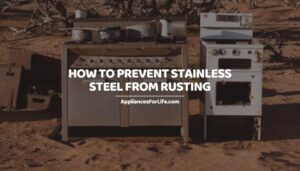
How to Prevent Stainless Steel from Rusting?
Stainless steel appliances have become very popular in different households over the years and the need to look after them properly has become very important. In this article, we’re going to be discussing how to prevent stainless steel from rust by looking at some of

61 Effective Kitchen Organization Ideas
Our kitchen organization ideas will help you know where to put things in the kitchen, and how to organize kitchen appliances. The kitchen is one of the busiest places in the house, and a lot of people spend so much time in there that they
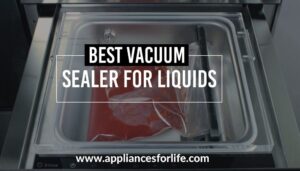
Top 5 Best Vacuum Sealers for Liquids
Different people invest in vacuum sealers for different reasons. For some, it is to preserve their food, which is considered to be an ultimate reason for anyone to get a vacuum sealer, especially in a world that is filled with environmental factors that can affect
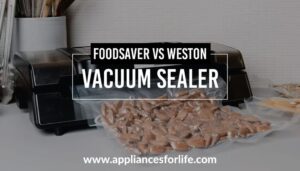
FoodSaver vs Weston Vacuum Sealer
Every household that takes food preservation very seriously must have, at one point, thought of getting a vacuum sealer. With each day that goes by, vacuum sealers are earning unrivaled popularity in many countries across the globe, especially the United States where the appliance market

Ziploc Vacuum Sealer V203 Review
The important roles vacuum sealers play in keeping our foods fresher for longer makes them indispensable in the world we live in today. Almost every household in the United States will need at least one vacuum sealer to keep their food items fresher for a
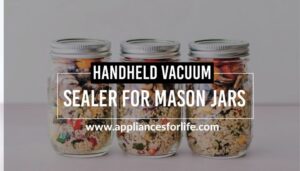
Top 3 Best Handheld Vacuum Sealers for Mason Jars
People may use different methods to preserve their food, but all methods are practiced to achieve a common goal, which is to keep the food fresh for a longer period. Over the past few years, vacuum sealers have played an important role in food preservation,

Should You Buy Extended Warranty on Appliances
If you’re purchasing appliances, warranties are not something you should overlook as they’re very important. Should you buy an extended warranty on appliances? Let’s find out in this article. Also in this article, we’re going to be looking at the difference between an extended warranty

